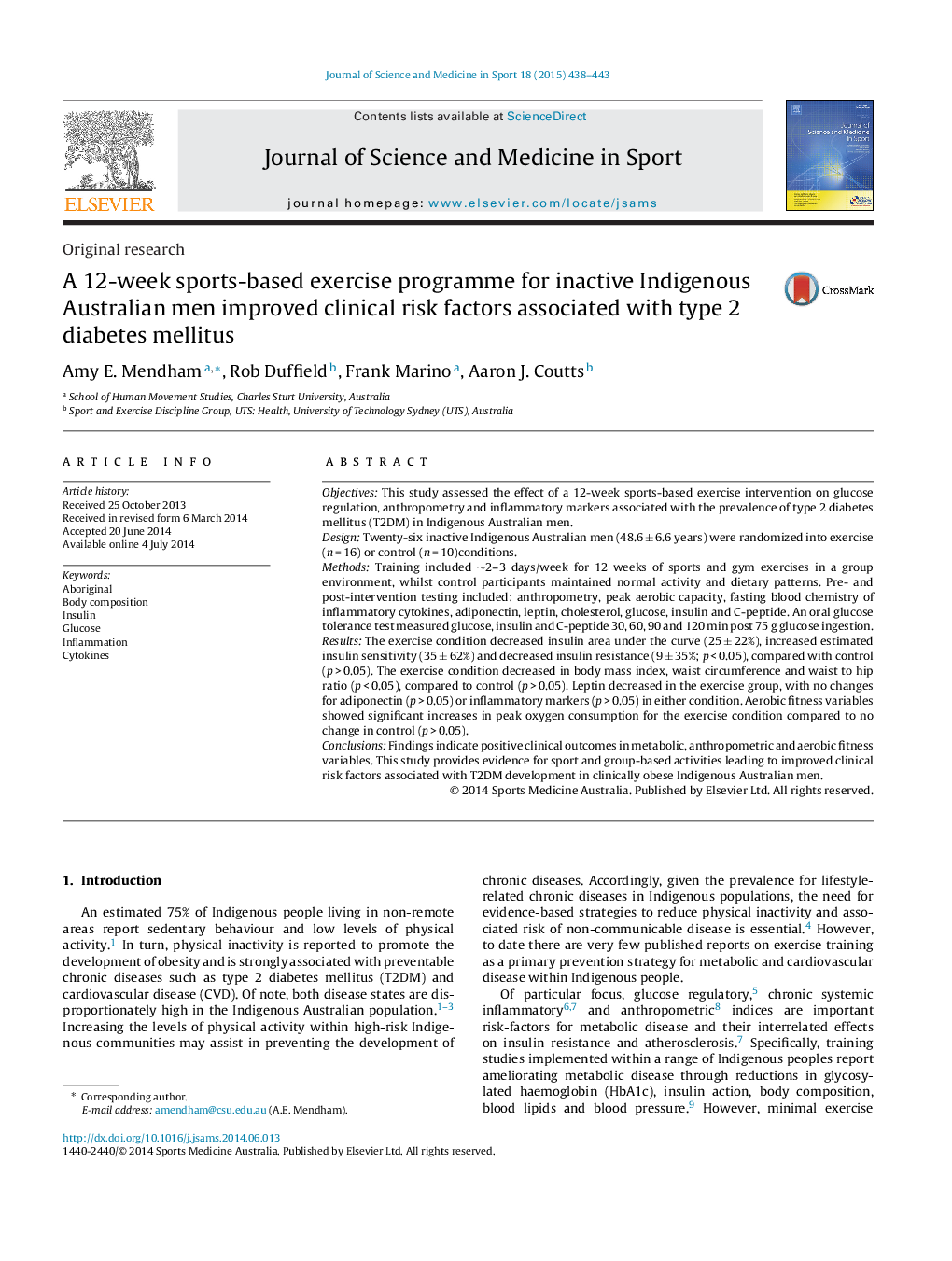| Article ID | Journal | Published Year | Pages | File Type |
|---|---|---|---|---|
| 2704241 | Journal of Science and Medicine in Sport | 2015 | 6 Pages |
ObjectivesThis study assessed the effect of a 12-week sports-based exercise intervention on glucose regulation, anthropometry and inflammatory markers associated with the prevalence of type 2 diabetes mellitus (T2DM) in Indigenous Australian men.DesignTwenty-six inactive Indigenous Australian men (48.6 ± 6.6 years) were randomized into exercise (n = 16) or control (n = 10)conditions.MethodsTraining included ∼2–3 days/week for 12 weeks of sports and gym exercises in a group environment, whilst control participants maintained normal activity and dietary patterns. Pre- and post-intervention testing included: anthropometry, peak aerobic capacity, fasting blood chemistry of inflammatory cytokines, adiponectin, leptin, cholesterol, glucose, insulin and C-peptide. An oral glucose tolerance test measured glucose, insulin and C-peptide 30, 60, 90 and 120 min post 75 g glucose ingestion.ResultsThe exercise condition decreased insulin area under the curve (25 ± 22%), increased estimated insulin sensitivity (35 ± 62%) and decreased insulin resistance (9 ± 35%; p < 0.05), compared with control (p > 0.05). The exercise condition decreased in body mass index, waist circumference and waist to hip ratio (p < 0.05), compared to control (p > 0.05). Leptin decreased in the exercise group, with no changes for adiponectin (p > 0.05) or inflammatory markers (p > 0.05) in either condition. Aerobic fitness variables showed significant increases in peak oxygen consumption for the exercise condition compared to no change in control (p > 0.05).ConclusionsFindings indicate positive clinical outcomes in metabolic, anthropometric and aerobic fitness variables. This study provides evidence for sport and group-based activities leading to improved clinical risk factors associated with T2DM development in clinically obese Indigenous Australian men.
